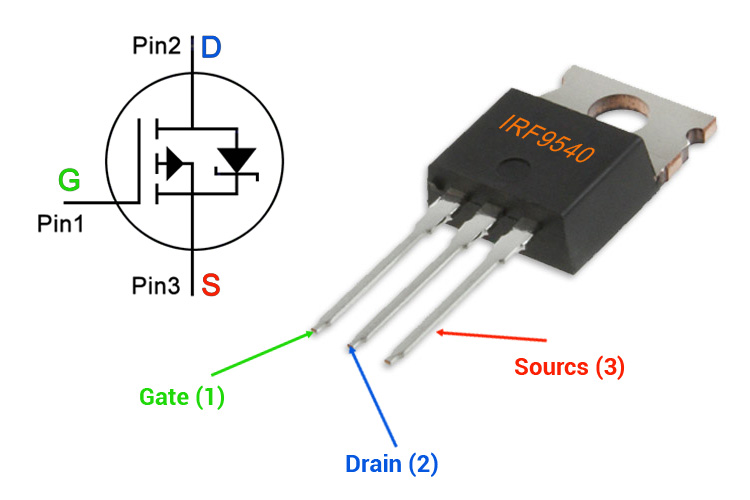
How to Wire an IRF9540 P-Channel MOSFET
In the world of electronics, MOSFETs (Metal-Oxide-Semiconductor Field-Effect Transistors) play a crucial role in controlling the flow of electricity in a circuit. One popular type of MOSFET is the IRF9540 P-Channel MOSFET, known for its high power handling capabilities and versatility. In this article, we will guide you on how to wire an IRF9540 P-Channel MOSFET effectively to unleash its full potential in your projects.
Understanding the IRF9540 P-Channel MOSFET
Before we dive into the wiring process, let’s first understand the basics of the IRF9540 P-Channel MOSFET. This MOSFET comes in a TO-220 package and has three pins: the Gate (G), the Drain (D), and the Source (S). The Gate pin is used to control the flow of current between the Drain and Source pins. The Drain pin is where the output voltage is taken, and the Source pin is where the input voltage is connected.
Wiring the IRF9540 P-Channel MOSFET
Now, let’s move on to the exciting part – wiring the IRF9540 P-Channel MOSFET. Follow these steps carefully to ensure a successful connection:
- Step 1: Identify the Gate, Drain, and Source pins on the IRF9540 MOSFET. The pin configuration may vary depending on the manufacturer, so always refer to the datasheet for accurate information.
- Step 2: Connect the Source pin to the ground (GND) of your circuit. This establishes the reference point for the voltage level.
- Step 3: Connect the Drain pin to the load or device you want to control. This is where the output voltage will be delivered.
- Step 4: Connect the Gate pin to the control signal or driver circuit that will regulate the MOSFET’s conductivity.
Once you have completed these steps, you have successfully wired the IRF9540 P-Channel MOSFET in your circuit. Remember to double-check your connections and ensure that everything is securely connected before applying power.
Optimizing Performance
To maximize the performance of your IRF9540 P-Channel MOSFET, consider the following tips:
- Use Proper Heat Sinks: Since the IRF9540 can handle high currents and voltages, it is essential to use adequate heat sinks to dissipate heat effectively.
- Implement Proper Gate Driving: Ensure that the Gate signal is provided with the correct voltage and current levels to control the MOSFET effectively.
- Protect Against Overcurrent: Incorporate protective circuits such as fuses or current limiters to prevent damage in case of a current overload.
By following these guidelines and tips, you can wire and utilize the IRF9540 P-Channel MOSFET efficiently in your electronic projects. Experiment with different configurations and applications to explore its full potential and enhance your circuit designs.
Conclusion
The IRF9540 P-Channel MOSFET is a versatile and powerful component that can elevate the performance of your electronic circuits. By understanding how to wire and optimize its usage, you can unlock a world of possibilities in your projects. Remember to refer to the datasheet and follow best practices for MOSFET wiring to ensure safe and efficient operation. Happy experimenting!
Was this helpful?
0 / 0